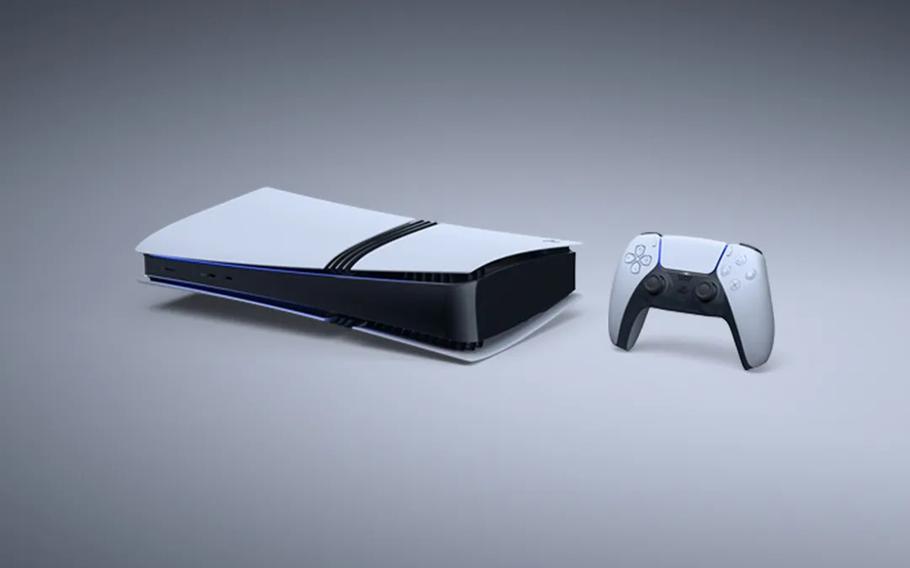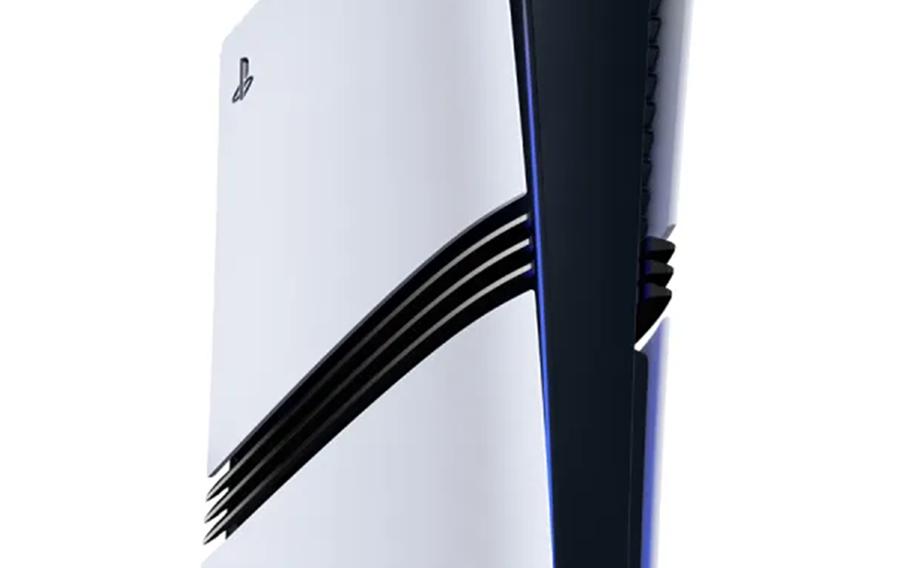
The PlayStation 5 Pro can do many dazzling things, but it might not be worth an upgrade from the already impressive PlayStation 5. (Sony Interactive Entertainment)
These days, it’s hard to trust what we see with our own eyes. So it goes with the PlayStation 5 Pro, a luxury product that creates real results that can be tough to catch.
Sony promises more than 50 games are now visually enhanced on the Pro console with more on the way. With 25 PS5 and PS4 games tested, I can’t immediately recommend spending $700 to upgrade the PlayStation 5 experience to anyone except tech enthusiasts and Sony hype beasts. I’ve already been astounded by the hair strand technology of the recently released Dragon Age: The Veilguard, already possible on my four-year-old PS5 machine.
The PS5 Pro, which comes with a generous 2 terabytes of storage, promises higher fidelity visuals, and it meets that promise. These games do look sharper (most of the time) and perform better (all the time). The problem occurs when you realize the fidelity can’t get much higher, especially considering the limited library of games today that take advantage of the performance boost.
A few games are standout showcases for the console. Final Fantasy VII Rebirth is the biggest beneficiary, as the vanilla PS5 rendered a very soft image to produce 60 frames-per-second gameplay, a rate preferred by players who want a faster response time after pressing a button. A patch released Monday adds a Pro-only “Versatility” mode, which presents that fast framerate with an image upscaled with artificial intelligence to 4K. It’s a striking difference.
The other notable game is last year’s Alan Wake 2 by Remedy Entertainment, which adds ray-tracing effects for sharper, more accurate reflections on surfaces. In 2019 I wrote that “ray tracing is the next generation of graphics,” and a few games use the technology on the regular PS5, including Remedy’s previous game Control. The technology remains heavy for even the most powerful computers, so Alan Wake 2 on PS5 did not feature this. Now on PS5 Pro, reflective surfaces appear correct with clear shapes rather than splotchy mirroring effects.
These are not, of course, the very best visuals on the market. On high-end PCs, Alan Wake 2 offers far sharper ray-traced reflections and more striking lighting effects. I only own a 2018-made gaming laptop, practically ancient technology, so as a gamer who primarily plays with consoles, the reflections in my favorite game of 2023 deepen my immersion as a more lifelike experience.
Here’s the rub. As a consumer and someone who could use a PC upgrade, I could set aside the $700 to invest in a much more expensive but much more powerful rig that would produce even sharper reflections and sharper results at a much higher performance. Yes, I’d easily be spending above $2,000, but $700 is still a large dent in that investment. The PC games market not only offers far more variety of games than consoles, but it also offers a great degree of customizable options like mods not available on walled-garden consoles.

The PlayStation 5 Pro has slight superficial differences from the stock console while the insides boast more power. (Sony Interactive Entertainment)
Not every game offers improvements on par with the two I’ve mentioned. Mark Cerny, PlayStation’s lead architect for consoles, promised in a September presentation that PS5 Pro brings “fidelity levels of detail but at double the framerate.” Alan Wake 2 and Rebirth meet this promise as do The Last of Us and Spider-Man series, games created by Sony’s studios. However, Ratchet and Clank: Rift Apart does not offer the “fidelity” level of detail, rather just the performance modes at a higher resolution. Cerny highlighted how distant crowds look clearer on the Pro, and they do, but there are fewer people in the stands, whereas the fidelity mode of Rift Apart features bigger crowds. It’s hard to tell the difference here.
That’s true across many of Sony’s titles, because they hit ceilings in detail and already ran perfectly on the base console. Differences in games like Marvel’s Spider-Man 2 and Stellar Blade are hard to spot without peeping pixels up close. Spider-Man and Ratchet both already had beautiful reflective surfaces, the reflections just look a little clearer. They didn’t need to be. Horizon Forbidden West, however, looks great in its new “performance pro” mode, with 4K visuals and smooth action.
It’s a few third-party titles that benefit the most. Games that previously struggled to handle massive worlds, like Elden Ring and Dragon’s Dogma 2, now run smoother than ever, although the former needs ray-tracing features off to run well. Other games that looked and ran great, like the Resident Evil series, only seem sharper, but the difference is immediately apparent.
PlayStation 4 games also see a resolution bump with PlayStation Spectral Super Resolution, or PSSR, Sony’s trademarked name for its AI upscaling technology. While the Pro’s operating system is largely the same as PS5, it comes with a toggle to enhance “some” PS4 games. I tested several and saw improvements. “Bloodborne” remains a 30 frames-per-second experience, as does any game with capped framerates, and the details are hard to spot, but zooming in on the text reveals a sharper image. The Yakuza series on PS4 also looks marginally clearer.
Perhaps the value could’ve been better if the PS5 Pro was packaged with a pair of binoculars to help spot these differences. For pixel peepers, I recommend the Digital Foundry YouTube channel, the internet’s best coverage of the granular tech of games. They are equipped with the technology to potentially find many more upgrades. But as a layman consumer sitting several feet away from his 4K TV, I forget I’m playing a “professional” PS5. It wasn’t like this with the PS4 Pro, released in 2016 as 4K TV sets were still becoming mainstream. Now we’re in a fidelity plateau.
The inherent limits of console gaming complicate a recommendation. On PC, Cyberpunk 2077 remains an industry benchmark despite being four years old, and the PS5 Pro does nothing for it. In the console world, all future advancements in games will still be anchored to older tech. It’s hard to see a future where we get substantial advancements in gaming beyond “looks sharper and runs smoother.”
If you’re like me and you’ve invested your time and money into hundreds of games on the PlayStation ecosystem, the $700 price tag becomes easier to rationalize with small but tangible, visible improvements across a currently unknown swath of PS4 and PS5 games beyond what I’ve tested. And despite the advantages of PC, I still prefer the plug-and-play comfort of a console.
For now, I recommend caution until more details emerge and more games are confirmed to have upgraded experiences. Future games are guaranteed to run on the base PS5, negating any necessity beyond the luxury in fidelity and performance. But things could change. Grand Theft Auto 6 looms, a sleeping pop culture titan waiting to be unleashed on consoles first. If the PS5 Pro actually becomes “the best place to play GTA 6,” the pitch then becomes very persuasive. It’s best to wait until this thing can do more than give us prettier versions of remakes or remasters of old games.